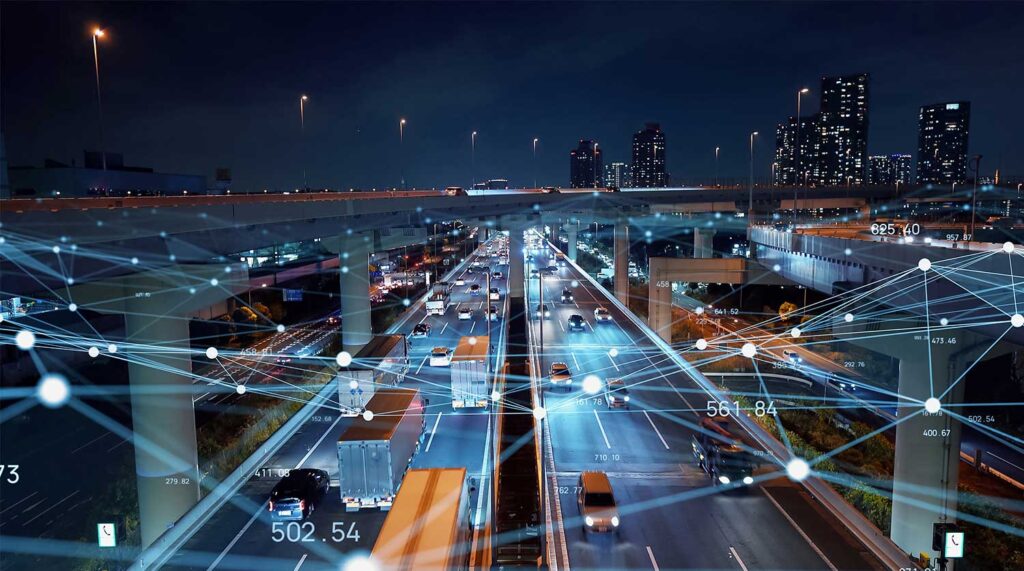Location Data Is Evolving and It’s Not Just for Marketers Anymore
January 5, 2023

The use of location data, traditionally the domain of advertisers and marketers, has expanded far beyond those industries. Today, industries as diverse as retail, real estate, and transportation leverage location data to gain insight into consumer behavior and human mobility patterns. New uses constantly arise, prompted by a specific challenge better understood through the insights location data provides.

With location data, organizations can identify consumer behavior trends: where people shop, where they eat, what events they attend, and more. That wealth of information can help decision-makers improve business outcomes.
It has become table stakes to use consumer data to remain competitive, and location data is an invaluable tool to understand people and places at scale. With insight into consumer behavior, decision-makers across a wide range of industries can ensure they’re making the right choice every time. Below are three instances of location data being used outside of marketing to achieve positive results.
Real Estate and City Planning
Lake Nona, Florida, is one of the fastest-growing planned communities in the United States. Located conveniently near Orlando International Airport and The Walt Disney World Resort, Lake Nona has just about everything one could ask for in its 17 square miles: top-rated educational institutions, business and research facilities, retail and entertainment centers, and more. Lake Nona is a young city with a median age of 36, and its residents are well-educated, successful, and community-oriented.
Lake Nona leaders were already collecting data and insights, such as demographic data, to make decisions on strategic planning, site development, and marketing strategies. They were also using annual surveys to glean more information about residents and their satisfaction with life in the community. But, for all that information on the permanent population, there was no way to evaluate the daily visitors to Lake Nona’s schools, shops, and restaurants. Location data, to the rescue!
Lake Nona worked with Gravy Analytics to geo-fence the entire community, including the Lake Nona Town Center, to observe mobile device data in these areas. With this technology, leaders could analyze where visitors came from, how long they stayed, and what activities they enjoyed. With those insights in place, Lake Nona was able to design a targeted strategic plan to ensure the long-term growth and success of the community. Click here to learn more about the study and its results.
Financial Advice
No decision is more important than how and where to invest money; one wrong move could spell disaster and financial ruin. That’s why Lagoon, a fintech company that helps asset managers identify investment opportunities and manage risk, worked with Gravy to enhance its platform by incorporating location analytics.
Although Lagoon’s platform, which fuses traditional and alternative datasets, already provided investors with data on a company’s workforce demographics, social media presence, and more, there was still a gap regarding the analysis of company performance. To that end, Lagoon worked with Gravy Analytics to implement Visitations data into the Lagoon platform. Gravy Visitations measures foot traffic at millions of stores, restaurants, hotels, concerts, and more throughout the United States and Canada, a strong indicator of business performance.
By incorporating Gravy’s data into Lagoon’s platform, investors could look at a company’s consumer visits and, in turn, gain a better understanding of that company’s consumer engagement and overall performance. Click here for more on Gravy’s partnership with Lagoon.
Disaster Recovery
According to the Emergency Event Database (EM-DAT), there were 432 natural disasters worldwide in 2021. Those events affected 102 million people, accounting for nearly 10,500 deaths and over $252 billion in damage. Given the devastating impact of a natural disaster, municipalities must prepare the best possible post-disaster recovery plans. Location data aids in this process, providing critical insights into the behaviors of the residents of these impacted communities. Below are three ways location data can help with post-disaster planning.
- Identifying high-impact areas
- Rebuilding the community
- Creating job opportunities
To read more about using location data in each of these three scenarios, check out this piece by Jeff White, Gravy’s founder and CEO, in Disaster Recovery Journal. To learn how researchers from the University of Florida Transportation Institute are using Gravy’s data to analyze evacuation behavior and enhance natural disaster emergency response planning and management, read our case study.
Conclusion
Companies are increasingly realizing that the benefits of using location intelligence go far beyond advertising and marketing. Virtually every industry has a use for the kinds of data we can provide at Gravy Analytics. If you’re not convinced it’s the right option to help your organization achieve positive outcomes, we invite you to read more about the myriad ways to leverage location intelligence.
This blog is part of our five-post blog series on location intelligence that aims to educate readers about location data and its uses, while also dispelling common misconceptions. To learn more about how your organization can benefit from the use of location intelligence, contact an expert from Gravy Analytics today.




